Reported Cases and Population Density
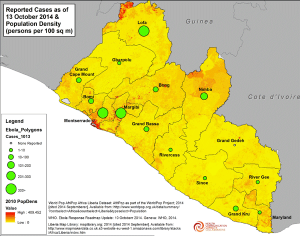 Reported Cases and Population Density, as of October 13, 1014 (Full Size JPG)
Reported Cases and Population Density, as of October 13, 1014 (Full Size JPG)
 Reported Cases and Population Density, as of October 13, 1014 (Full Size JPG)
Reported Cases and Population Density, as of October 13, 1014 (Full Size JPG)
 Reported Ebola Cases as of October 13, 2014 – Liberia, County-level (Full-size image)
Reported Ebola Cases as of October 13, 2014 – Liberia, County-level (Full-size image)
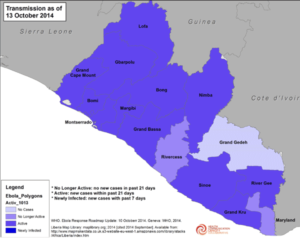 Transmission – County- level Liberia October 13, 2014 (Full-sized image)
Transmission – County- level Liberia October 13, 2014 (Full-sized image)
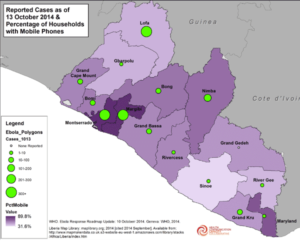 Reported Ebola Cases & Percentage of Households with Mobile Phones, as of October 13, 2014 (Full Size JPG)
Reported Ebola Cases & Percentage of Households with Mobile Phones, as of October 13, 2014 (Full Size JPG)
 Report of the WHO Expert Consultation on Outbreak Communications held in Singapore, 21–23 September, 2004.
Report of the WHO Expert Consultation on Outbreak Communications held in Singapore, 21–23 September, 2004.
Outbreak Communication: Best practices for communicating with the public during an outbreak.
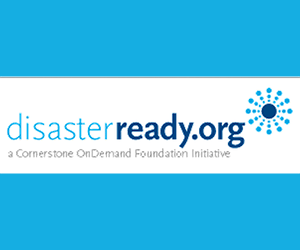 The DisasterReady.org team has released a 15-minute online course providing basic awareness on the Ebola outbreak. The new Ebola Awareness Quick Guide is now available online at DisasterReady.org. This 15-minute quick guide is developed with content available from the World Health Organization, CDC, and other organizations. The general public and aid workers without specialized health training will benefit from increased awareness of this outbreak.
The DisasterReady.org team has released a 15-minute online course providing basic awareness on the Ebola outbreak. The new Ebola Awareness Quick Guide is now available online at DisasterReady.org. This 15-minute quick guide is developed with content available from the World Health Organization, CDC, and other organizations. The general public and aid workers without specialized health training will benefit from increased awareness of this outbreak.
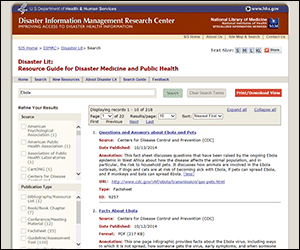 Literature from the U.S. Department of Health & Human Services about Ebola.
Literature from the U.S. Department of Health & Human Services about Ebola.
 Access to the U.S. National Library of Medicine for Ebola resources.
Access to the U.S. National Library of Medicine for Ebola resources.
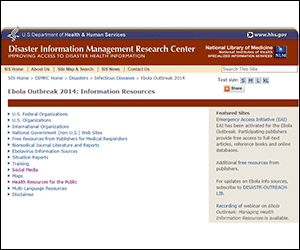 A website from the U.S. Department of Health & Human Services with information on the 2014 Ebola outbreak.
A website from the U.S. Department of Health & Human Services with information on the 2014 Ebola outbreak.
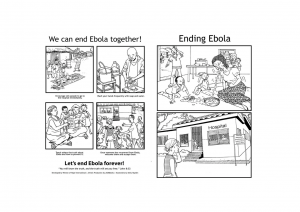 This health lesson on the transmission and prevention of Ebola from the context of West African thought utilizes story and participatory methods to help people embrace the concepts presented. It is designed to be used in a small group setting with participation from the learners, and accompanies the Ending Ebola picture booklet. This lesson is available in English and French. All resources can be viewed and downloaded here.
This health lesson on the transmission and prevention of Ebola from the context of West African thought utilizes story and participatory methods to help people embrace the concepts presented. It is designed to be used in a small group setting with participation from the learners, and accompanies the Ending Ebola picture booklet. This lesson is available in English and French. All resources can be viewed and downloaded here.

The Ebola Communication Network was originally developed by the Health Communication Capacity Collaborative (Cooperative Agreement #AID-OAA-A-12-00058) and expanded under Breakthrough ACTION (Cooperative Agreement #AID-OAA-A-17-00017) both under the leadership of Johns Hopkins Center for Communication Programs. This website is now maintained by Johns Hopkins Center for Communication Programs and its contents are the sole responsibility of CCP. The contents of this website do not necessarily reflect the views of USAID, the United States Government, or Johns Hopkins University.
